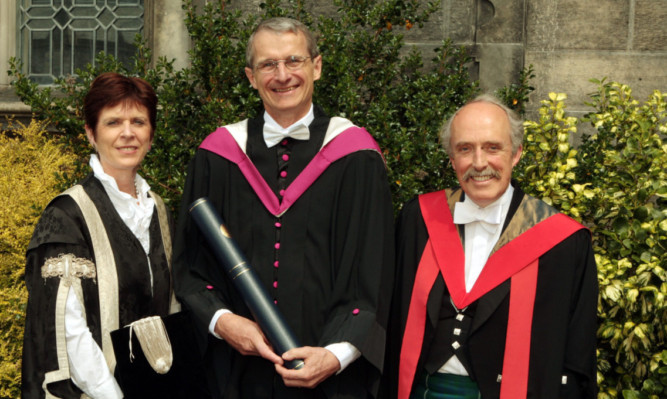A Nobel Prize-winning scientist has been honoured by St Andrews University.
Professor Richard Schrock won the Nobel Prize for Chemistry in 2005 for his innovative work on olefin metathesis, which is when carbon and metal atoms join with two bonds.
Olefin metathesis is now used in the preparation of a number of revolutionary treatments, including cancer-targeting nano-particles.
On Wednesday, he was presented with an Honorary Degree of Doctor of Science in front of scores of new graduates from a number of science disciplines.
“Dick Shrock is a chemist who has won so many prizes that it is impossible to list them,” said Professor David Cole-Hamilton, who spoke at the ceremony.
“However, they were all capped by his being awarded the Nobel Prize for Chemistry in 2005 along with Bob Grubbs and Yves Chauvin for their work on olefin metathesis.”
Former St Andrews lecturer and hall manager Lorna Walker was also awarded the University Medal at the ceremony.
Miss Walker, who studied as an undergraduate at the university, was appointed to the St Andrews staff in 1961 on a double contract, the first of its kind, as both a lecturer in mediaeval history and warden of University Hall.
“While Miss Walker is admired for her scholarship and teaching, it is as the long-serving warden of University Hall that she is most widely and affectionately known to thousands of former students who lived there between her arrival in 1961 and retirement in 1991,” said Professor Lorna Milne.
“She always showed outstanding dedication to her work as warden, creating a warm and homely atmosphere for hall residents and taking a great interest in the welfare of each student.”
But Mrs Walker also had a significant teaching career, Professor Milne said, with a wide variety of interests across medieval history as well as an exceptional commitment to student care.
Since retiring as warden in 1991 and from the mediaeval history department in 1994, Miss Walker has continued to involve herself in the hall community by managing the University Hall St Andrews Graduates Association, an alumni group.
